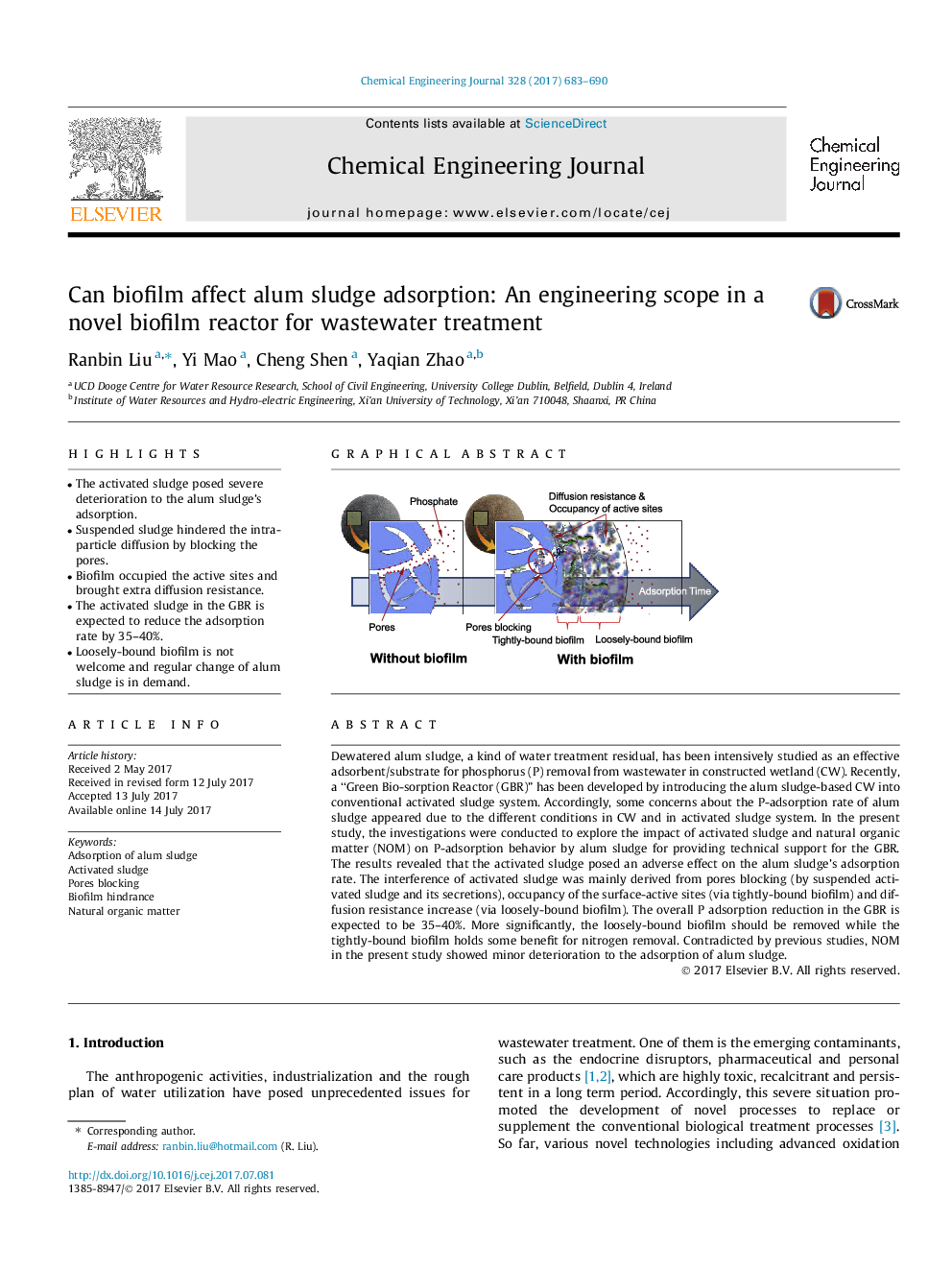| کد مقاله | کد نشریه | سال انتشار | مقاله انگلیسی | نسخه تمام متن |
|---|---|---|---|---|
| 6465275 | 1422950 | 2017 | 8 صفحه PDF | دانلود رایگان |
- The activated sludge posed severe deterioration to the alum sludge's adsorption.
- Suspended sludge hindered the intra-particle diffusion by blocking the pores.
- Biofilm occupied the active sites and brought extra diffusion resistance.
- The activated sludge in the GBR is expected to reduce the adsorption rate by 35-40%.
- Loosely-bound biofilm is not welcome and regular change of alum sludge is in demand.
Dewatered alum sludge, a kind of water treatment residual, has been intensively studied as an effective adsorbent/substrate for phosphorus (P) removal from wastewater in constructed wetland (CW). Recently, a “Green Bio-sorption Reactor (GBR)” has been developed by introducing the alum sludge-based CW into conventional activated sludge system. Accordingly, some concerns about the P-adsorption rate of alum sludge appeared due to the different conditions in CW and in activated sludge system. In the present study, the investigations were conducted to explore the impact of activated sludge and natural organic matter (NOM) on P-adsorption behavior by alum sludge for providing technical support for the GBR. The results revealed that the activated sludge posed an adverse effect on the alum sludge's adsorption rate. The interference of activated sludge was mainly derived from pores blocking (by suspended activated sludge and its secretions), occupancy of the surface-active sites (via tightly-bound biofilm) and diffusion resistance increase (via loosely-bound biofilm). The overall P adsorption reduction in the GBR is expected to be 35-40%. More significantly, the loosely-bound biofilm should be removed while the tightly-bound biofilm holds some benefit for nitrogen removal. Contradicted by previous studies, NOM in the present study showed minor deterioration to the adsorption of alum sludge.
220
Journal: Chemical Engineering Journal - Volume 328, 15 November 2017, Pages 683-690
